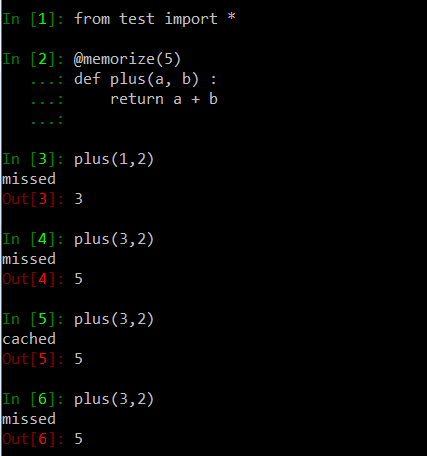静态方法装饰器:
在python中一般关于“静态”有静态变量和静态函数两个东西。静态变量具有全局属性,也就是说它是属于某个类的,而不是这个类所产生的实例。举个例子,下面的示例程序,表示的是统计Test类所创建出的实例个数,其中instancesCount为静态变量。在外部,用函数的方式对静态变量的访问一般有两种情况,一种是通过具体实例访问,另一种是通过类方法直接访问。那么,我们就需要静态方法来实现类的直接访问,即(类名.函数名)的方式。python提供两种方法,一种是通过staticmethod函数将函数转化为静态方法,另一种是通过装饰器的方式,将一个函数装饰成静态方法。
class Test:
instanceCount = 0
def __init__(self):
Test.instanceCount += 1
@staticmethod
def printTotal():
print Test.instanceCount
def anotherPrint():
print Test.instanceCount
anotherPrint = staticmethod(anotherPrint)
if __name__ == '__main__':
t1 = Test()
t2 = Test()
t3 = Test()
Test.printTotal()
Test.anotherPrint()
提到静态方法的装饰器,那么不得不提的就是类方法的装饰器即classmethod,类方法与静态方法使用起来很相似,都可以通过“类名.函数名”以及“实例名 .函数名”的方法使用。但是,区别如下:静态方法在定义的时候无需任何其他参数,而类方法则必须传入一个类参数,在调用从父类继承过来的子类的类方法时,子类会传入到类方法中,这是staticmethod所不具备的。
class test : @classmethod def echo(cls): print cls class test2(test) : pass if __name__ == '__main__' : test.echo() test2.echo()
如上面的例子所示,运行结果为:__main__.test , __main__.test2。
一般装饰器:
装饰器是个特别有用的机制,@method ,相当于将下面的函数名,作为method的参数传入,然后封装一层后返回一个新的函数。一般的使用方法如下:
def test(function) : def _test2(args): print 'Hello' function(args) return _test2 @test def echo( args ) : print 'world'
上面的装饰器例子,相对比较死板,如果装饰器函数也需要参数的话,那么就必须使用第二层封装。如下:
def hello(fromWho) : def _hello(function) : def __hello(who) : print fromWho ,'say hello to', function(who) return __hello return _hello @hello('Peter') def say(who) : print who if __name__ == '__main__' : say('David')
上例,输出结果为:Peter say hello to david
《python高级编程》中提及常见的装饰器包括参数检查,缓存,代理,上下文提供者四种模式。最后,给出一个《python高级编程》里面一个很经典的将装饰器模式应用于缓存的例子。
import time import hashlib import pickle from itertools import chain cache = {} def is_obsolete(entry, duration): '''判断是否过期''' return time.time() - entry['time'] > duration def compute_key(function, args, kwds): '''通过sha1算法生成一个key''' key = pickle.dumps((function.func_name, args, kwds)) return hashlib.sha1(key).hexdigest() def memorize(duration=10): def _memorize(function): def __memorize(*args, **kwds): key = compute_key(function, args, kwds) if (key in cache and not is_obsolete(cache[key], duration)): print 'cached' return cache[key]['value'] print 'missed' result = function(*args, **kwds) cache[key] = {'value':result, 'time':time.time()} return result return __memorize return _memorize
测试如下:
